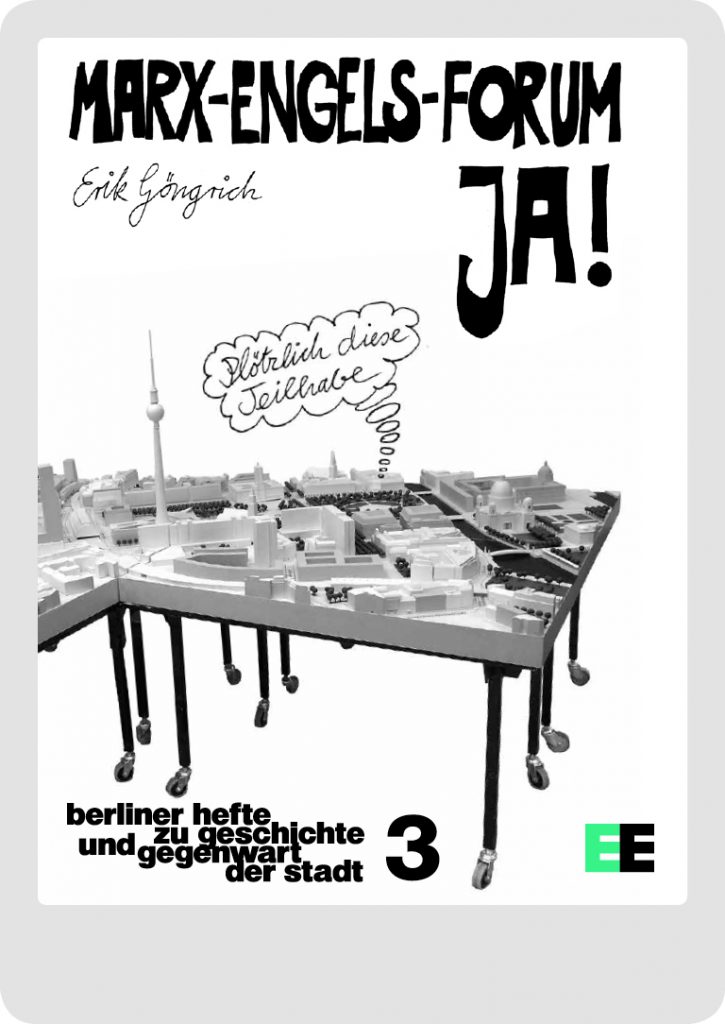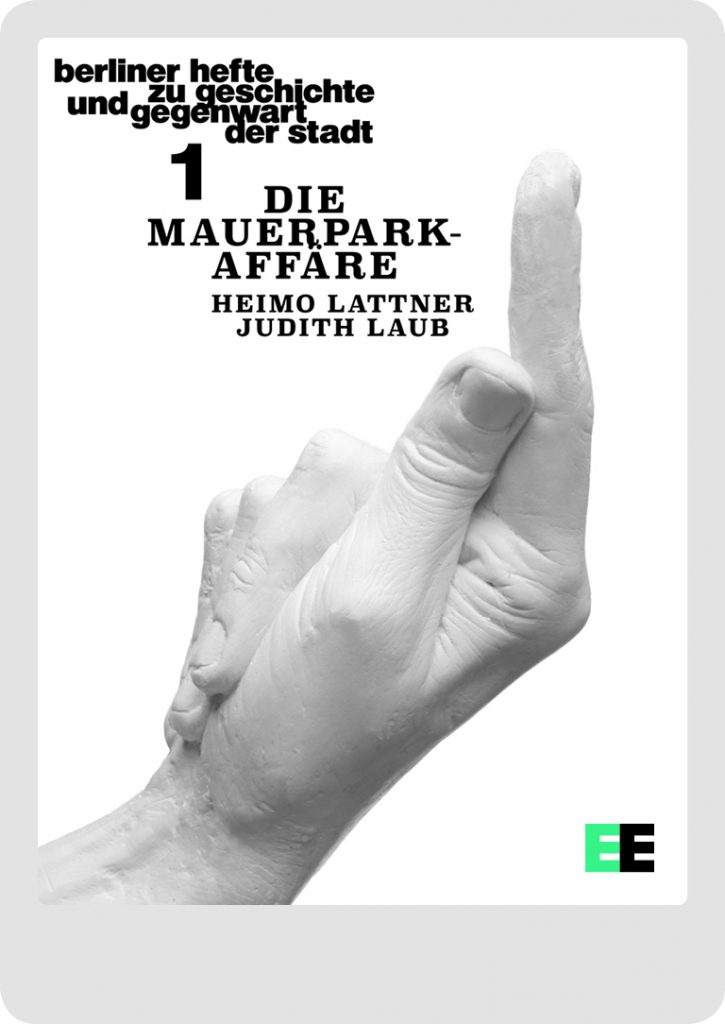Marx-Engels-Forum – JA!
Marx-Engels-Forum – YES!
On 4 April 2016, around forty people gathered to commemorate the 30th anniversary of the founding of the Marx-Engels-Forum in Berlin Mitte. Most of them had attended the site’s dedication in 1986—the lived history of a place whose meaning has consistently been denied.
In the 1950s and 60s the site was earmarked for a high-rise tower for the East German government yet this never materialized. Then in 1973 plans were laid—and ultimately realized—for a forum in the form of a public park. After 1989 the park remained unchanged or possibly was even forgotten.
Today, there are two opposing camps: on the one hand those who advocate an exact reconstruction of the city’s ground plan as it looked here in medieval times—almost as if the historicism driving the reconstruction of the palace on the far bank of the Spree has proved contagious; and on the other, the ‘modernists,’ who are committed to preserving and further developing the last vestiges of East German Modernist architecture and urban planning.
Located as it is between the television tower and the future Humboldt Forum, the Marx-Engels-Forum is a place of commemoration par excellence. It has been closed to the public since 2010 owing to work to extend the subway line U5, but is set to enjoy a new lease of life as an urban recreation zone by 2019. This publication illustrates and puts up for debate both the history of the site and the recurrent negotiations regarding its use, including those of 2015 in which the public was invited to participate. How might an open space—since, YES, that’s what is all about—be preserved at a prime downtown location and configured such as to accommodate continually changing uses?
If freedom is to be a feature of the appropriation of the forum then freedom must be inscribed in the very design of this urban public space, from its inception. And what better solution therefore, than to base its development on the physical presence of various sculptural ensembles? After all, the sculptures were there first—and not only those of Marx and Engels!

